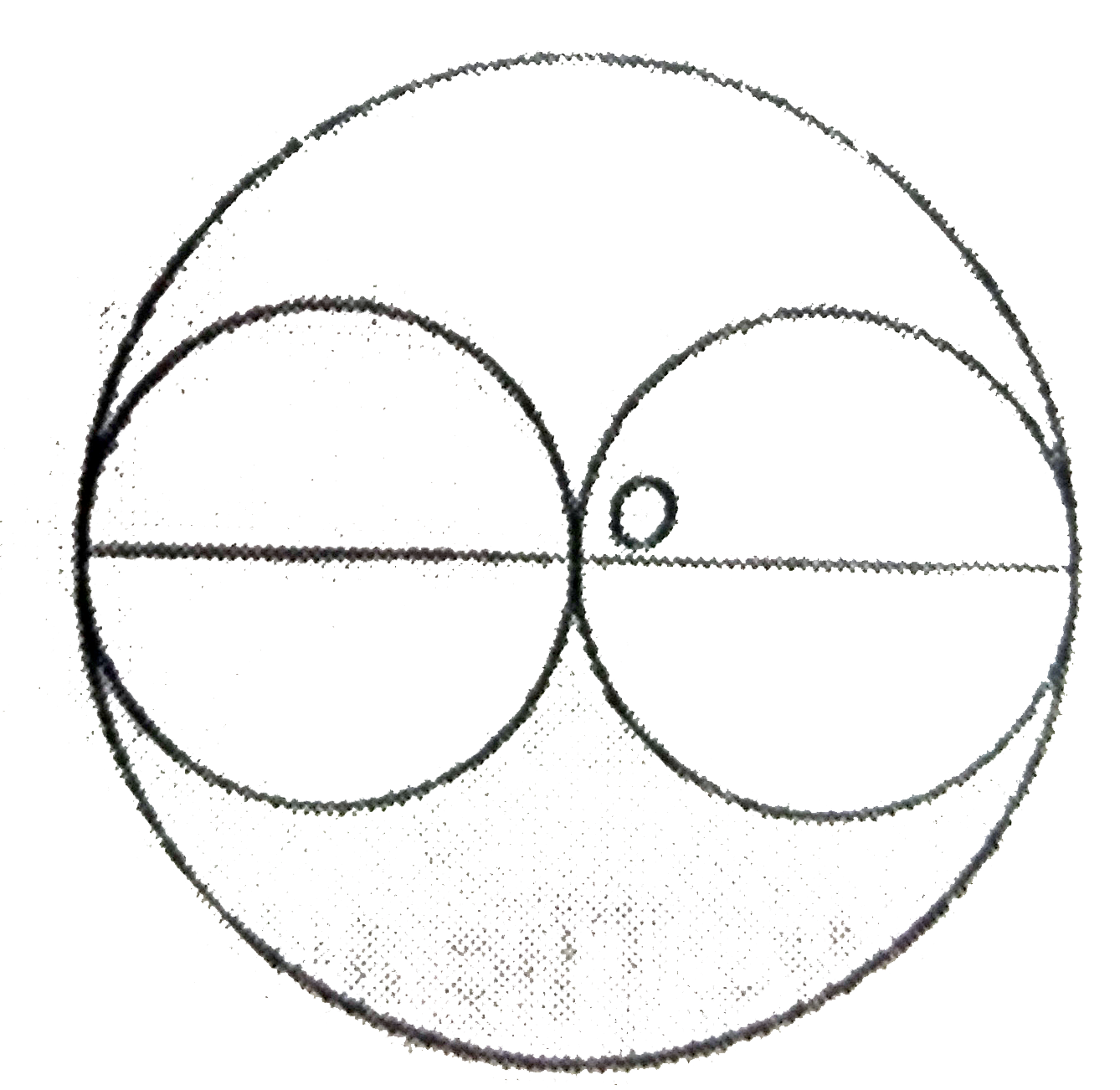In the given figure,three circles of radius 2 cm touch one another externally.These circles are circumscribed by a circle of radius R cm.Find the approximate value of R.
To find the radius R of the larger circle that circumscribes three smaller circles of radius 2 cm that touch each other externally, we can follow these steps:
1. Understanding the Configuration:
We have three circles, each with a radius of 2 cm, touching each other externally. The centers of these circles form an equilateral triangle.
2. Finding the Side Length of the Triangle:
Since the radius of each circle is 2 cm, the distance between the centers of any two circles (which is the side length of the triangle) is:
AB=2+2=4 cm
Thus, each side of the equilateral triangle ABC is 4 cm.
3. Calculating the Height of the Triangle:
To find the height AD of the equilateral triangle, we can drop a perpendicular from point A to the midpoint D of side BC. The length of BD (half of BC) is:
BD=42=2 cm
Using the Pythagorean theorem in triangle ABD:
AB2=AD2+BD2
Substituting the known values:
42=AD2+2216=AD2+4AD2=16−4=12AD=√12=2√3 cm
4. Finding the Center of the Circumscribing Circle:
Let O be the center of the circumscribing circle. The distance from O to the midpoint D is 23 of the height AD:
OA=23×AD=23×2√3=4√33 cm
5. Calculating the Radius R:
The radius R of the larger circle is the distance OA plus the radius of the smaller circles:
R=OA+2=4√33+2
To combine these, we convert 2 into a fraction:
R=4√33+63=4√3+63
6. Approximating the Value of R:
To find the approximate value of R, we can use √3≈1.732:
R≈4×1.732+63=6.928+63=12.9283≈4.309 cm
Final Answer:
The approximate value of R is 4.309 cm.
We have three circles, each with a radius of 2 cm, touching each other externally. The centers of these circles form an equilateral triangle.
Since the radius of each circle is 2 cm, the distance between the centers of any two circles (which is the side length of the triangle) is:
AB=2+2=4 cm
Thus, each side of the equilateral triangle ABC is 4 cm.
To find the height AD of the equilateral triangle, we can drop a perpendicular from point A to the midpoint D of side BC. The length of BD (half of BC) is:
BD=42=2 cm
Using the Pythagorean theorem in triangle ABD:
AB2=AD2+BD2
Substituting the known values:
42=AD2+2216=AD2+4AD2=16−4=12AD=√12=2√3 cm
Let O be the center of the circumscribing circle. The distance from O to the midpoint D is 23 of the height AD:
OA=23×AD=23×2√3=4√33 cm
The radius R of the larger circle is the distance OA plus the radius of the smaller circles:
R=OA+2=4√33+2
To combine these, we convert 2 into a fraction:
R=4√33+63=4√3+63
To find the approximate value of R, we can use √3≈1.732:
R≈4×1.732+63=6.928+63=12.9283≈4.309 cm
The approximate value of R is 4.309 cm.
Topper's Solved these Questions
Similar Questions
Knowledge Check
Find the area of a circle of radius 5.6 cm.
A58.56cm2.B78.56cm2.C98.56cm2.D88.56cm2.
The perimeter (in cm) of a square circumscribing a circle of radius a cm,
View SolutionFind the circumference of a circle with radius 3.5cm.
View SolutionThe radius of a circle is 7 cm. Find its area
View SolutionA reactangle with one side 4 cm is inscribed in a circle of radius 2.5 cm. Find the area of the rectangle
View SolutionFind the area of a circle with radius 3.5cm.
View SolutionIn the given figure two small circles touch each other externally at the centre of a big circle and these small circles are touched internally by a big circle of radius 4cm. Find the area of the shaded region

View SolutionThree circles each of radius 1, touch one another externally and they lie between two parallel lines. The minimum possible distance between the lines is
View Solution
